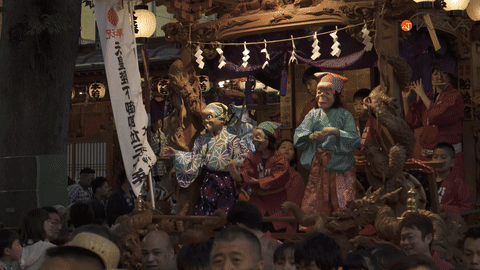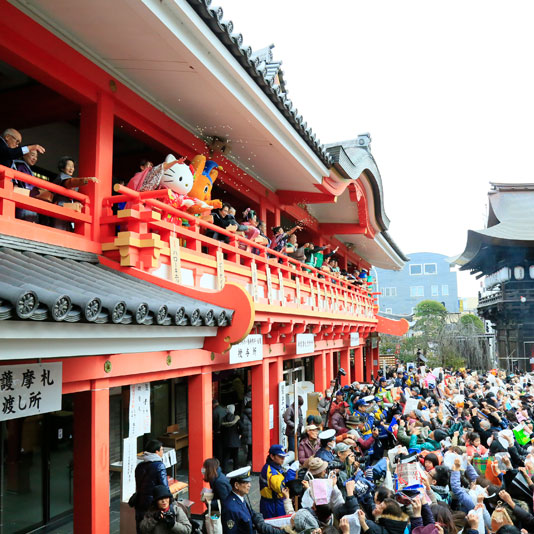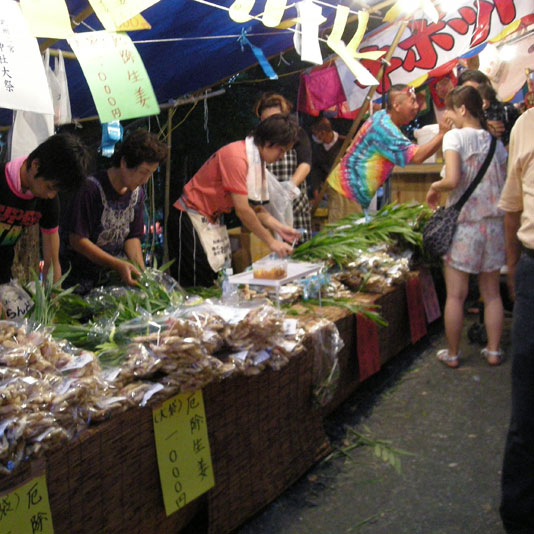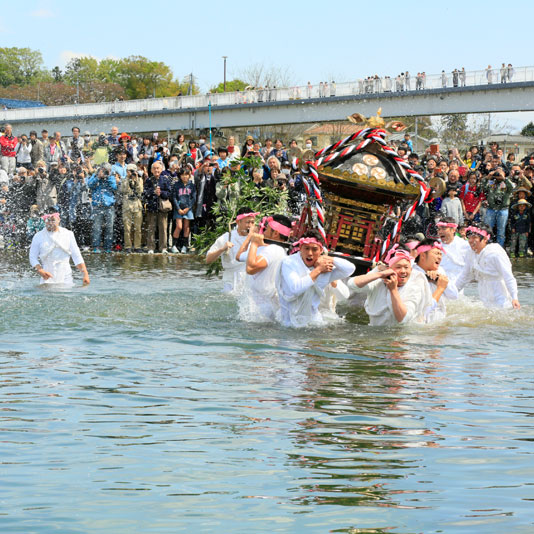Tama’s Festival


- Short Ver.
- Long Ver.
Japanese festival and Tama
Held throughout Japan, there is a variety of large and small festivals. It is said that there are between 100,000 to 300,000 festivals held in Japan. The word “Matsuri” (festival) originates from the word “Tatematsuru,” which refers to being in the service of blessed existence.
A majority of the festivals from antiquity are performed alongside historic days and annual Japanese events. “Reitaisai” refers to the festivals at shrines where the gods of Shinto are enshrined and are main events for every shrine. On 3rd February, the day of “Setsubun (the last day of winter in the traditional Japanese calendar)”, the Setsubun festival is held. At both shrines and temples, many people praying for good fortune and for protection from evil come to take part of Mamemaki event.
Tama’s Festival Introduction

Kurayami festival
- Fuchu
- Festival
- Keio
The Kurayami-matsuri Festival is held every year from 30th April to 6th May. It is the Ookunitama Shinto Shrine’s annual festival in Fuchu City and, in addition, one of the Kanto’s three major strange festivals of Kanto area. Long ago, the name Kurayami originates from an event called “Mikoshi Togyo.” Mikoshi Togyo was an event where in the midst of the night when the lights were extinguished, Mikoshi would be transferred as to “it is taboo to look straight upon the appearance of the gods.” The Mikoshi Togyo is on 5th May, and is cued with fireworks. Eight Mikoshi will be led by large Taiko drums to a place called Otabisho, a place where the souls of the deceased rest. This location is at the intersection of the Kamakura-kaido Route and the former Koshu-kaido Highway.

Takahata-Fudoson Kongoji Temple "Setsubun Festival"
- Hino
- Festival
- Keio
Every year on 3rd February, the Setsubun Festival is held at Hino City’s Takahata-Fudoson Kongoji Temple, one of Kanto’s Big Three Fudoson. It is an event representing Hino City and draws nearly 40,000 people. The Mamemaki is held a total of 5 times in the morning and evening. Numerous groups of splendid guests and men born in the current zodiac year will participate in the Mamemaki, and the festival will be crowded with sightseers ranging from children to adults. On the day, the shops on the grounds will be stocked with luck charms and the very popular Fukubukuro.

Shoga festival
- Akiruno
- Festival
- Keio
The Autumn Festival at Ninomiya Shrine in Akiruno City is held every year on 9th September.
At the festival since olden times, leaves collected from the region, deep-rooted ginger and taro, and mochi called “cow’s tongue” were presented before the gods along with other offerings. Ginger especially was part of a rumor that was spread. It was said if you ate Ninomiya Shrine’s ginger, then you would ward off evil and be in a perfect state of health. Before long, many stores began to start lining the grounds of the shrine and gradually many festival sightseers and people requesting ginger also gathered. At some point, Ninomiya Shrine’s Autumn Festival eventually became associated with the name “Shoga-matsuri Festival.

Yakumo shrine
- Hamura
- Festival
- JR
Every year in Hamura City, the “Hamura Spring Matsuri Festival (a regularly held festival at Yakumo Shrine)” will be held on the second Saturday and Sunday of April during the “Hamura Hana-to-Mizu Matsuri Festival”. As the main part of the grand festival, there will be a Mikoshi from Inari Shrine which will cross the river at Sekishita in Hamura. A large turnout of tourists come visit to see this stirring event every spring.


